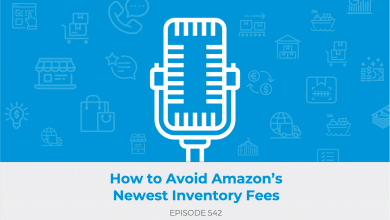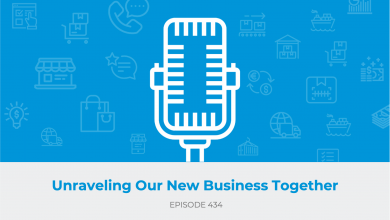E604: Manufacturing in America vs China – My Honest Take
In this episode, Dave explores the differences between manufacturing in China, India and the USA after ordering some products from all three countries. We talk about the good, the bad and the ugly between all three areas and the factors that you should consider if you do choose to move your manufacturing to India or to America. Specifically, we'll dive into the lead times, the cost differences between each country (including tariffs), the quality differences and the other pros and cons we found.
Struggling with tariffs? Unsure about upcoming changes? Let’s talk! With Portless, you only pay tariffs after your customers pay you – so your cash always moves faster than your costs. Schedule a risk assessment and leverage tariff deferment today. All new customers get $1,000 to reinvest in their business.
Now that the tariffs have been somewhat finalized, we can now do a clear and accurate breakdown of the pros and cons of manufacturing in China, India and the US.
So for the sake of our audience, Dave ordered products from each country to breakdown the differences in quality, costs, and lead times that you should know about.
If you've been considering moving your manufacturing base, then this episode is definitely for you.
In a rush? Here's the high-level takeaways:
- Manufacturing in China currently comes with the caveat of 50%~ tariffs.
- Lead times in India are basically unpredictable because everything is handmade.
- Prices in India are generally higher than in China, despite lower tariffs but the quality of products from India is high, especially in textiles and handicrafts.
- American manufacturing offers lower lead times but comes at 2x the cost of Chinese prices.
- Finding manufacturers in America can be challenging because of high MOQs and lack of responsiveness.
- Most manufacturers in America are already selling D2C.
- A lot of American manufacturers have a lot of requirements to create your product.
- American manufacturers typically also do not do any additional kitting for free.
- Online marketplaces for manufacturing are emerging as valuable resources in the US.
- E-commerce entrepreneurs may need to consider in-house manufacturing as a long-term strategy.
- The future of manufacturing may involve a mix of domestic and overseas production.
- Understanding the specific product requirements is crucial when choosing a manufacturing location.
Here's some timestamps if you'd like to skip around:
- 00:00 Manufacturing Landscape: China, India, and America
- 08:20 The Pros and Cons of Indian Manufacturing
- 15:21 Navigating American Manufacturing Challenges
- 22:24 Future of Manufacturing: Trends and Predictions
As always, if you have any questions or anything that you need help with, leave a comment down below if you're interested.
Don’t forget to leave us a review on iTunes if you enjoy our content.
Thanks for listening!
Until next time, happy selling!



